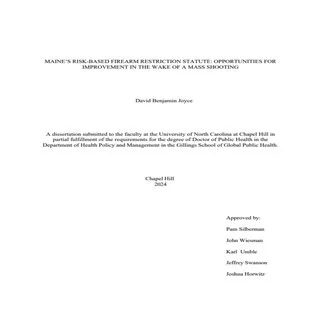By Ileana Mendoza,and Cierren Edmondson
For far too long, law enforcement has been the primary response to the gun violence epidemic in the United States. However, an institution built and sustained through coercive control and violence cannot be expected to bring healing to communities, nor can it address the social conditions that lead people to choose gun violence as a means to an end. Addressing community-level gun violence requires a public health-based approach that centers the community and addresses the root causes of gun violence. Through evidence-based, public health strategies, Community Violence Intervention and Prevention Initiatives (CVIPI) provide a comprehensive and compassionate alternative for addressing and preventing gun violence. This issue brief highlights the need for community-driven strategies, examines the current challenges in evaluating CVIPI e orts and argues that e ective evaluation must involve community partnerships and focus on the experiences of program participants and violence intervention and prevention specialists (VIPs).This focus on CVIPI comes at a critical moment. Communities are still experiencing gun violence while simultaneously facing shrinking budgets for prevention and public health initiatives. Staggering cuts to Department of Justice (DOJ) funding, the looming expiration of American Rescue Plan Act (ARPA) funds in 2026 and the dismantling of the White House O ce of Gun Violence Prevention threaten the future of CVIPI. Without federal funding and a dedicated o ce to coordinate and champion CVIPI, these programs may be faced with the decision to scale-back operations or shut down. These converging realities make it clear that the time to rigorously evaluate, strengthen, and sustain CVIPI is now. Doing so can ensure these strategies not only survive current funding gaps, but also become a permanent fixture in the nation’s approach to prevent and intervene in gun violence.
West Hollywood, CA,: Center for Policing Equity, 2025. 17p.






